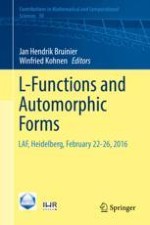This book presents a collection of carefully refereed research articles and lecture notes stemming from the Conference "Automorphic Forms and L-Functions", held at the University of Heidelberg in 2016.
The theory of automorphic forms and their associated L-functions is one of the central research areas in modern number theory, linking number theory, arithmetic geometry, representation theory, and complex analysis in many profound ways.
The 19 papers cover a wide range of topics within the scope of the conference, including automorphic L-functions and their special values, p-adic modular forms, Eisenstein series, Borcherds products, automorphic periods, and many more.
